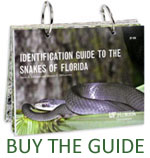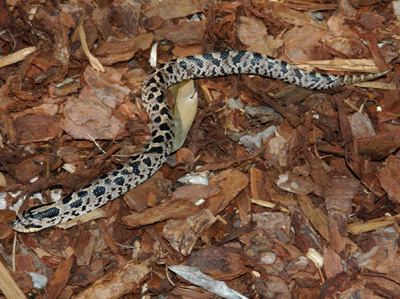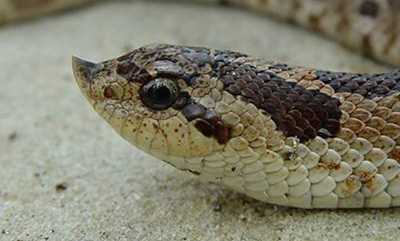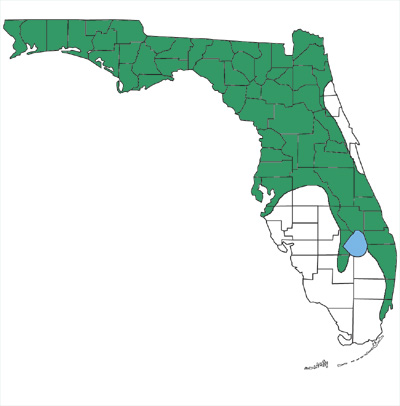Florida's Snakes

Southern Hog-nosed Snake
(Heterodon simus)NON-VENOMOUS

Blotched
Southern Hog-nosed Snake


Photos by Ryan Means (Coastal Plains Institute, upper photo), and Gabriel Miller (Minnesota DNR, lower photo). These photos may not be used without the express written permission of the photographer.
Size:
Usually 1–1.5 ft. (max. 2 ft.)
Identification:
Body is gray-brown to tan; underside of the tail is the same color as the belly. Back and sides are marked with irregular, dark brown-black blotches that are often separated by orange-red blotches along the spine. Neck is marked with large blotches; forehead is marked with a dark band that extends behind each eye to the corners of the jaw. Scales have obvious lengthwise ridges (keels); scale on the tip of the snout is strongly upturned. When threatened, it may play dead or flatten its neck and hiss, hence the nickname “spreading adder.” It is sometimes mistaken for the venomous Pygmy Rattlesnake but has round eye pupils. This snake lays eggs.
Habitats:
Found in northern/central Florida (but rarely seen) in areas with sandy soils, including sandhills, pine-oak forests, scrubs, agricultural areas, and coastal dunes.
Diet:
Mostly toads and frogs, also small lizards
Map by Monica E. McGarrity - may be used freely for education.
